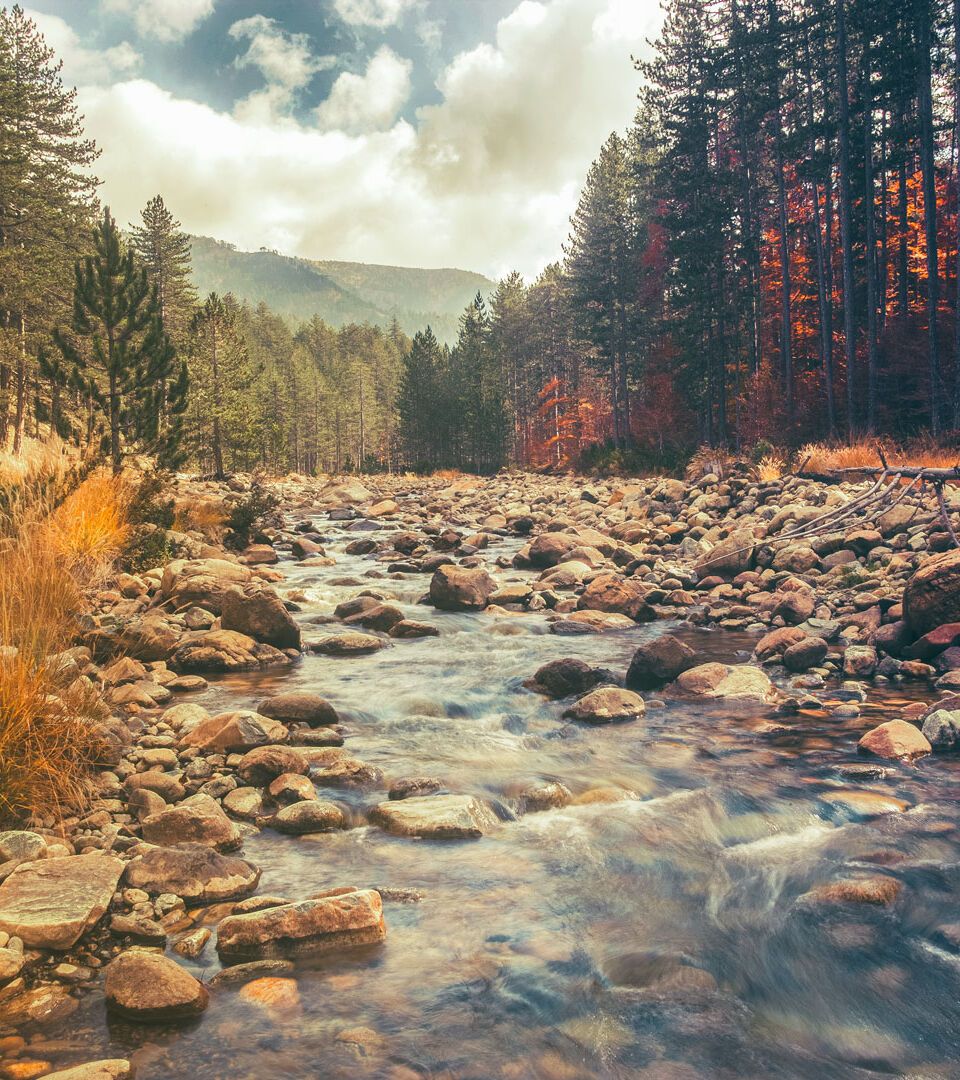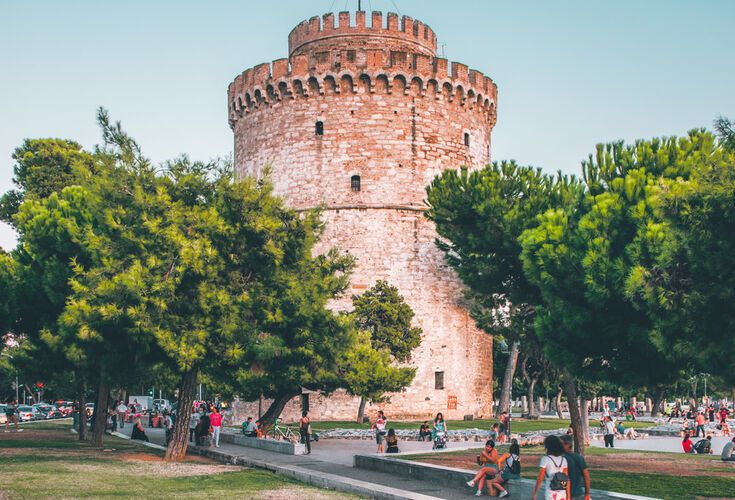The towering Pindus Mountains, jagged rocks and a huge forest of conifers and deciduous trees make up the Macedonian landscape in Grevena. With alpine valleys, rushing rivers, gentle streams with arched stone bridges, and tavernas with blazing fireplaces, mountain lovers will adore this part of northern Greece at any time of year.
During winter, the southern Pindus Mountain range comes into its own. Skiers and snowboarders flock to the ski centre at Vasilitsa. But the great outdoors is there for all to enjoy. And by night, with the still silhouette of the mountains looking on and crisp, clear air to keep your energy levels high, there’s the vivacious, youthful party atmosphere in Grevena itself. Reasons enough to get out your map and plan a visit.
What to do in Grevena
The city on the route of the caravans
Grevena might seem remote on the map, but in the past it was a key stopover for caravans and something of a meeting point for traders and the semi-nomadic Vlach herdsmen who travelled through Macedonia, between Trikala and Thessaly, Kozani, Metsovo, Samarina and villages like Vasilitsa in the southern Pindus. Back then they followed the Via Egnatia, the old Roman road that crossed northern Greece.
Today, the newly completed modern version brings Grevena even closer. You’ll feel the kefi (joie de vivre) in Eleftheria and Emilianos squares. This city in northern Greece heats up even the chilliest of nights, while the aromas of a roaring fire and grilled meats waft through the air, enticing you in.
The Pindus National Park
It’s not just the burbling streams and rare red pine forest that make this area special. It’s the extraordinarily diverse scenery that will captivate you in the Pindus National Park. For starters, there’s the ‘hot valley’ of Valia Kalda, so-called because it’s so much warmer than the high peaks that surround it.
As the seasons change, you’ll enjoy pastures carpeted with hundreds of spring flowers, the perfume of the aromatic herbs, the myriad colours of the autumn leaves, and the snow-capped summits of the Pindus Mountains. And around you are the two alpine lakes of Flegas, the Arkoudorema or bear ravine (home to the brown bear) and much, much more. You’ll need to stay a while to discover them all.
Traditional Vlach villages
Some say the Vlachs are descendants of Roman legionaries who were stationed in the Balkans. Originally nomadic herdsmen who spoke a Latin language rather than Greek, they eventually settled all over northern Greece in villages that have been called ‘sculptures in stone’. Situated between arched bridges and dense forest, these hamlets keep their traditions alive. Samarina, the most famous of the Pindus Vlach settlements, takes first place in being the highest rural community in Greece that is inhabited year-round. It stands at 1,450m near the top of Mt Smolikas and the beauty of nature here will enchant you.
Vasilitsa: The Snow Queen
Vasilitsa (literally ‘little queen’) was just another peak of Smolikas before it became a regal ski resort. Today, in the nearby village of Smixi, you’ll be treated to all the comforts of a winter sports centre, including hotels, tavernas and après-ski fun. Notwithstanding its contemporary sheen, the resort retains all the natural beauty of the landscape in which it is set. The skiing and snowboarding slopes that descend between the trees are considered amongst the best in Greece.
Smixi: Traditional yet up to date
The village nearest to the ski centre from the Grevena side, this genuine Vlach settlement in Macedonia evolved from the joining together of two older hamlets. Here you can choose between luxury hotels or cosy traditional pensions, while feasting on delicious local specialities in exceptional tavernas and restaurants.
Hidden gems of Grevena
Stone bridges
Every stone in the arched bridges reflects the mason’s skill and pride in his work. They add to the beauty of the riverbanks they adorn. Those at Portitsa and Aziz Aga are considered the loveliest.
Holidays in the land of mammoths!
It’s hard to believe but 200,000 years ago, judging from fossils excavated at nearby Ambelia, Grevena must have been home to mammoths weighing close to 12 tonnes. The search for more is ongoing.
Spilaio
If you look closely above the Valley of Venetikos, you’ll spot a cluster of houses teetering on the edge of the Velonia Ravine. This is another high village called Spilaio or ‘cave’, at an altitude of 960m, which boasts the celebrated Panagia Spilaiotissa monastery, the most significant sight in the region.


